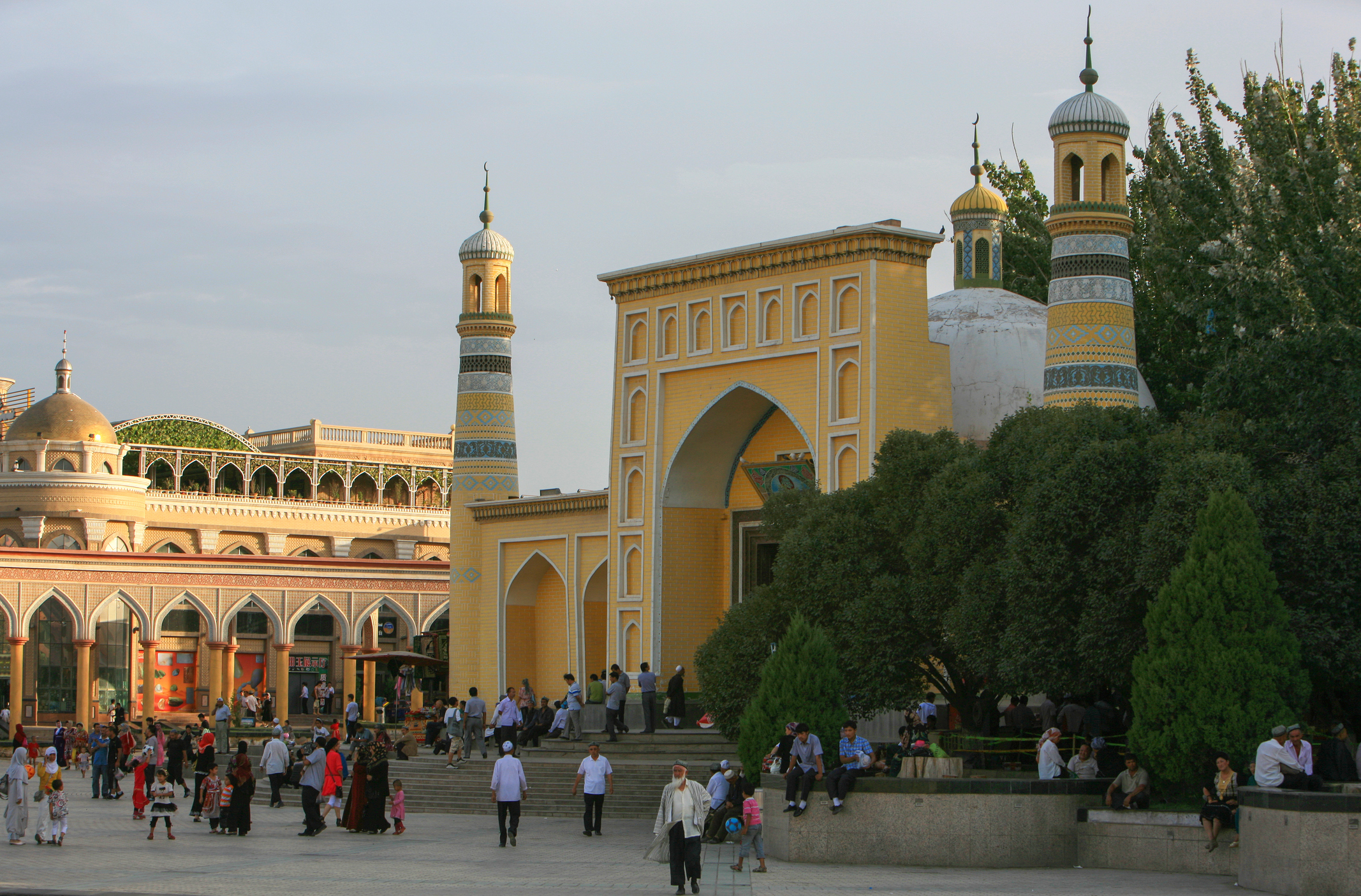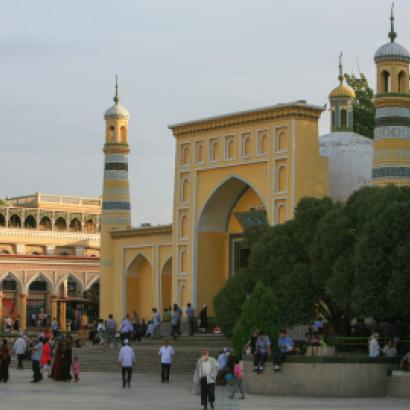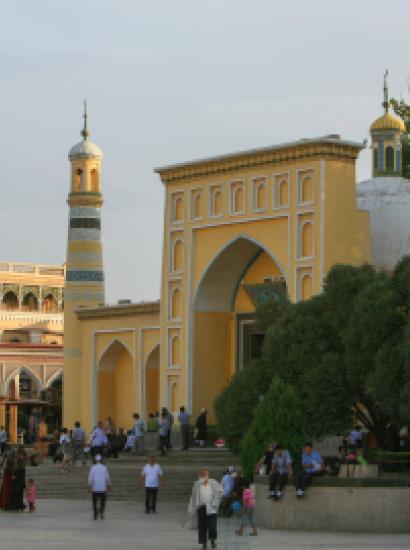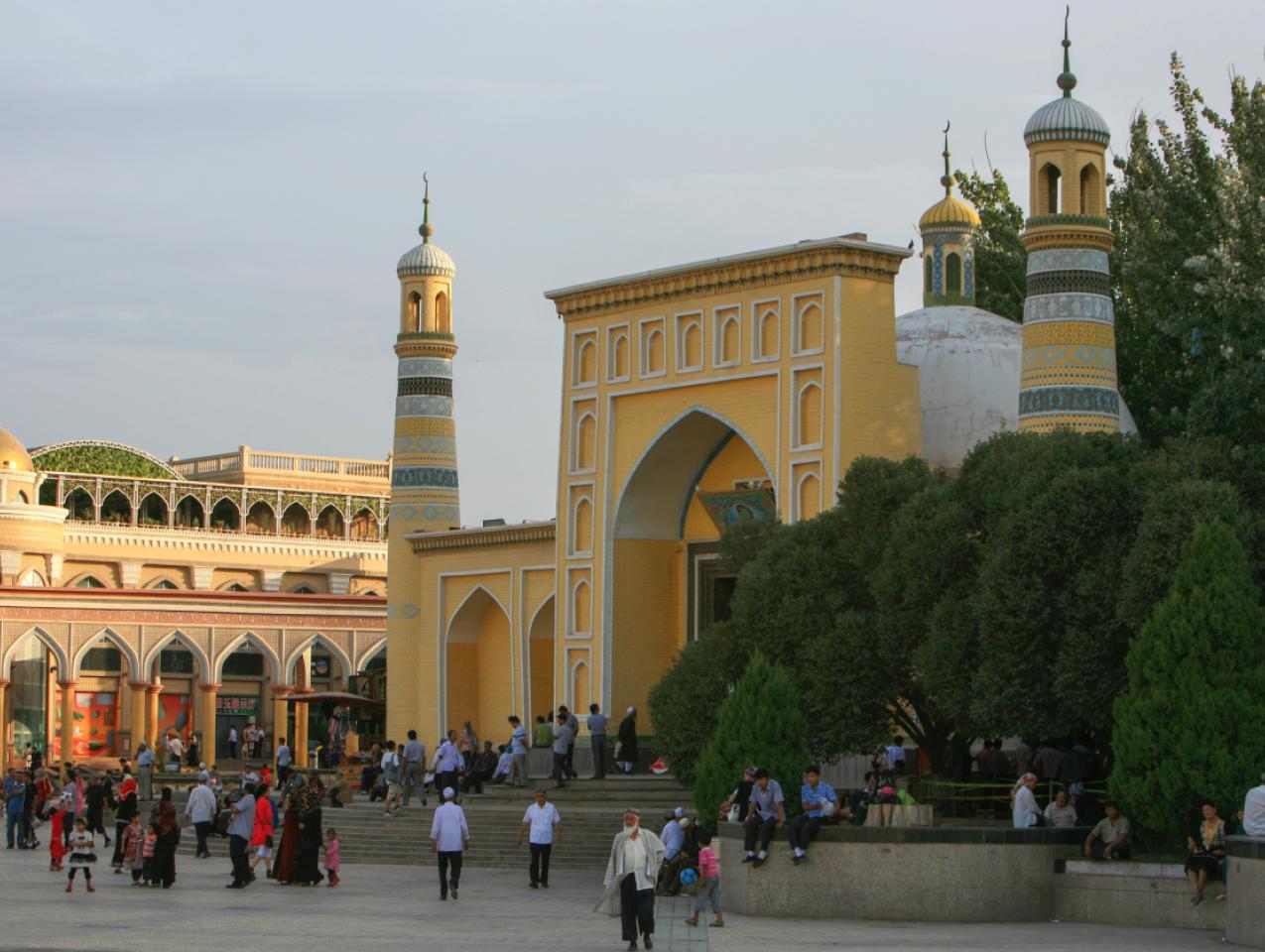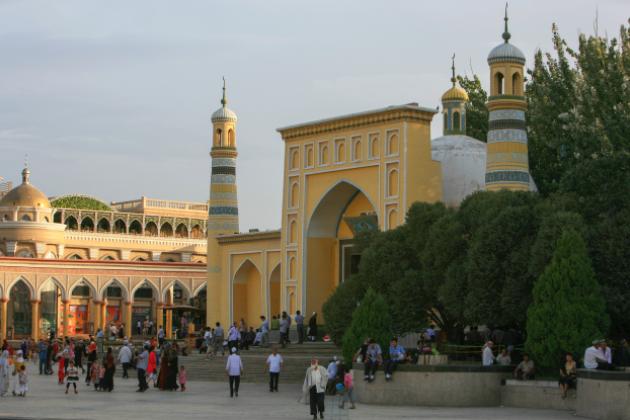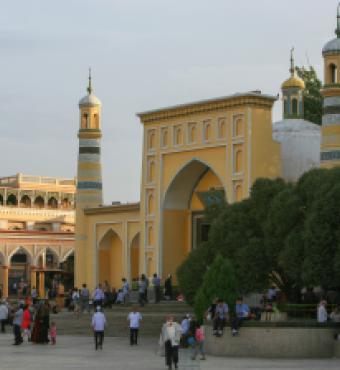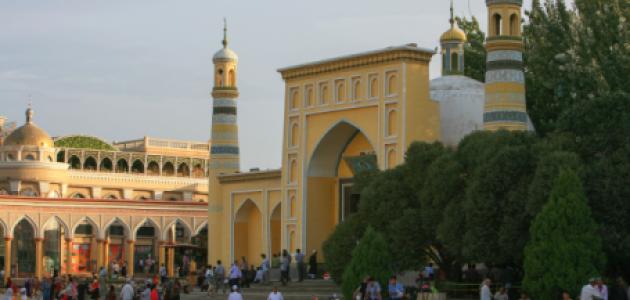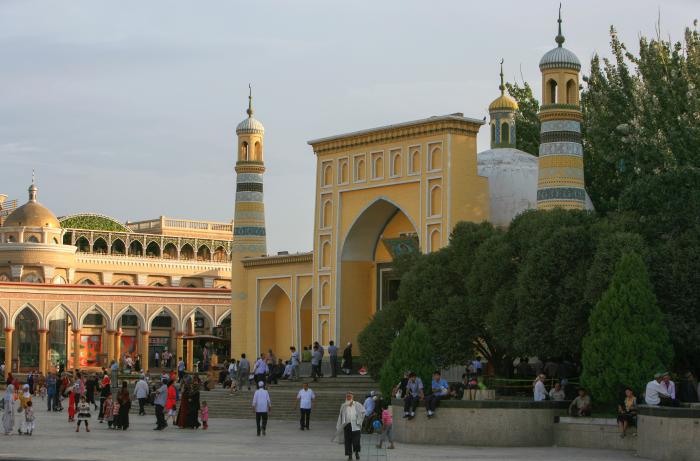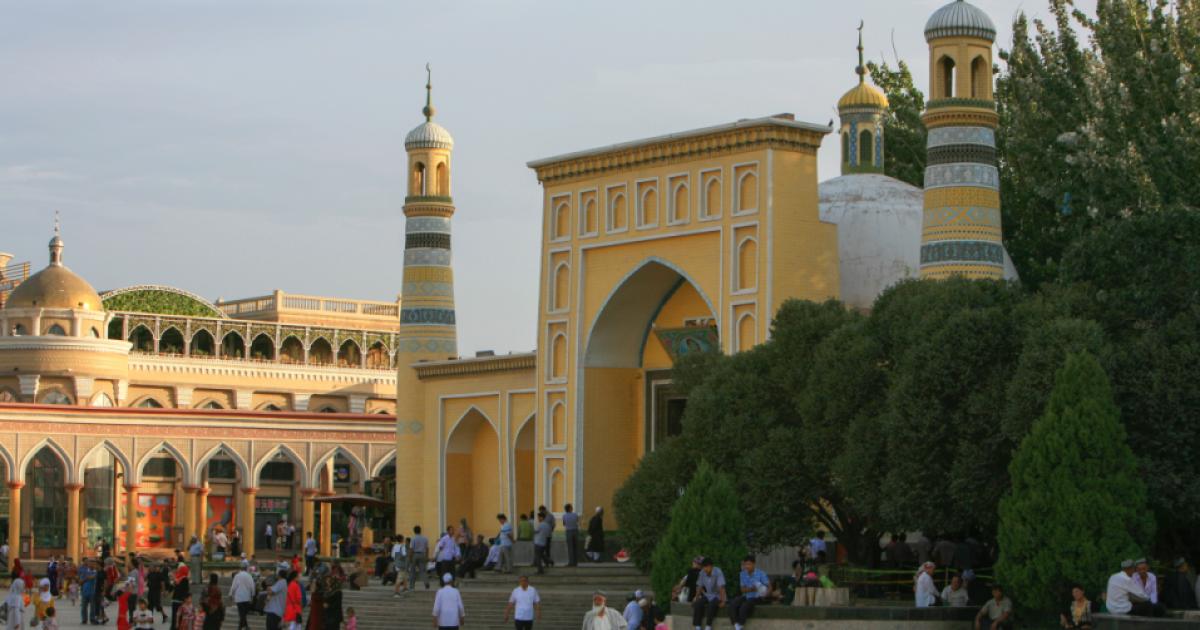Since its founding in 1949, the Chinese communist government in Beijing has long considered a northwestern region on its vast political map a primary troubled spot for the regime and has systematically implemented various measures to seek total control of this important territory. Of the four non-China Proper areas, the other three, i.e. Manchuria, Mongolia and Tibet have longer, and more complicated historical connections with China.
Officially called Xinjiang, or New Territory [Frontier], but indigenously known as East Turkestan by its local population, predominantly the Muslim Uyghurs, this fourth non-China Proper region has the most flimsy and least intrinsic historical, ethnic, cultural and religious connections with China, making it the most volatile and tense area. As a result, for the past seven decades, this area has witnessed a protracted campaign by the Beijing government of ethnic Sinification, massive forced population relocation, and large build-up of Communist Party apparatus and Chinese military and police presence.
Yet it is only for the last fifteen years or so that this protracted war for control of Xinjiang has dramatically sped up with a gigantic jump in its intensity and brutality, demonstrating a frenzied urgency on the part of the Beijing government and an unrelenting resolve of the Chinese communist leadership to solve the “Xinjiang Problem” once and for all.
The signs of such a rushed final settlement with the Uyghurs are unmistakable: the mushrooming "re-education" camps for up to one-million Uyghurs swiftly set up in less than a year; the mass arrests and detentions of a large number of Uyghurs accounting for over 20 percent of all arrests in China among an ethnic minority that has only 10 million people, or 1.5 percent of China's 1.4 billion population; the draconian hi-tech all-weather, round-the-clock total electronic surveillance dragnet covering the entire Xinjiang region; the massive deployment of fully-armed multiple divisions of the Chinese People's Armed Police in addition to the multiple corps of the regular PLA troops; the nearly complete cut-off of Xinjiang from international press and the Internet, and the severe restrictions on the Uyghurs' personal freedoms of travelling, lodging, schooling, religious worshipping, even grooming as Uyghur men are banned from keeping long beards and women from wearing Uyghur ethnic attire; the lucky few Muslims who have to pledge their allegiance to the Chinese Communist Party first will have to wear a Beijing-issued electronic monitoring device on their neck on their way to Mecca for the Hajj pilgrimage.1
Why such urgency and why suddenly a final solution in Xinjiang?
First of all, China's latest surge of suppression in Xinjiang is triggered by the emergence in the last two decades of a new Chinese security awareness that centers on an alleged U.S.-led global anti-China alliance designed for encircling and containing a rising socialist China from all of China's peripheries--from Mongolia, South Korea, Japan, Guam and Taiwan in the north and east to Vietnam, India and Afghanistan in the southeast, southwest and west--all sides except one region, the northwestern Xinjiang Uyghur Autonomous Region where the U.S. influence is presumably the weakest or non-existent. It is, therefore, imperative for China to make the Xinjiang region its ultimate strategic rear from where to counter the U.S.-led "containment" coming from all other sides. To this end, the "Uyghur problem" would have to be solved first, as no potential for unrest and trouble should be allowed in the new base for China's survival in the deeply believed new Cold War allegedly waged and led by the U.S. against the socialist motherland.2
Toward this objective, China's recent three supreme leaders, Jiang Zemin, Hu Jintao and the incumbent Xi Jinping, all embrace such a new security agenda and engage in feverish Xinjiang ethnic pacification and military buildup campaigns, with each of the three leaders having his own landmark event in implementing this Xinjiang final solution. For Jiang, in 2001, it was the Shanghai Cooperation Organization [SCO] that quickly led to the outpouring of China's strategic resources into securing Xinjiang against the U.S. "encirclement and containment" through an alliance with Russia and other former Soviet Central Asian republics such as Kazakhstan, Kyrgyzstan, Tajikistan and Uzbekistan.
As Jiang's SCO project demanded rapid militarization and Sinification of Xinjiang, the Uyghurs faced a sudden surge of restrictions and oppression by the Chinese government, which led to the 2009 violent ethnic clash in Xinjiang under the next Supreme Leader, Hu Jintao, who spared no mercy in suppressing it as the world watched in disbelief. The 2009 Uyghur incident and its brutal suppression served as a prelude to the current Supreme Leader Xi Jinping's final push for the complete elimination of the "Uyghur problem" in Xinjiang.
Secondly, Supreme Leader Xi Jinping's project maxima, the gigantic $4-8 trillion Belt and Road Initiative [BRI], creates yet another preponderant impetus for the Beijing government to "pacify" the Uyghur population as Xinjiang now serves as the logistics base and nexus for the BRI's key component projects. The BRI's signature projects all start at this Uyghur region. The New Eurasian Land Bridge starts from Xinjiang, runs through Kazakhstan, Russia, Belarus, Poland and finally reaches Germany. The China-Turkey Corridor also starts from Xinjiang; so does the China-Pakistan Economic Corridor.
Thirdly, China's surging strategic partnership with Russia in an attempt to form a united front against the U.S.-led West also requires Beijing to quickly eliminate the Uyghur problem as a prerequisite for a healthy and long-lasting Moscow-Beijing alliance.
Historically, Moscow has been the biggest factor in supporting and fomenting the Uyghur independence movement. In its fight against the Kuomintang [the Chinese Nationalists] control of Xinjiang, the Soviet Union, both under Vladimir Lenin and later Josef Stalin, supported the Uyghurs. In 1921, the Soviet Union officially defined Uyghurs under Chinese rule as "non-Chinese" belonging to a Turkic ethnicity. In 1933, Stalin supported the creation of the Kashgar-based Uyghur independent state known as the First East Turkestan Republic [FETR]. After its demise as a result of the Chinese warlord Sheng Shicai's military victory over the FETR, the Soviet Union set up a surrogate Second East Turkestan Republic [SETR] in 1944 that was based in Ili, Xinjiang. In 1949, Stalin betrayed the Second East Turkestan Republic by agreeing to Mao Zedong's demand to subjugate the SETR to the newly established, Moscow-backed People's Republic of China and brokered peace talks between the leaders of the SETR and Mao Zedong in 1950. But on its way to Beijing for the powwow, the entire SETR leadership team perished in a plane crash over the Soviet Union while in transit to Beijing, thus saving both Moscow and Beijing from being bothered by the independence-minded Uyghur elites for the following decades. But in the turbulent up-and-down Beijing-Moscow relationship after Stalin's death, the Soviet leaders, from Khrushchev to Brezhnev, all used the East Turkestan independence movement and Soviet Turcologcial studies as weapons of an "ideological war" against the Chinese communist infidels, causing Beijing nightmares. In the post-USSR era, Uyghur studies within Russian intelligentsia and publications of Turcological works about the Uyghurs and their plight and independence aspirations have witnessed a revival. Mindful of Moscow's past penchant for using the Uyghur issue as a wedge and a bargaining chip in the increasingly existential Beijing-Moscow bilateral relationship, China's leaders are wasting no time to eliminate the source of such a scenario, the newly revived Uyghur independence movement, now with a religious flavor to it, known as the East Turkestan Islamic Republic [ETIR].
Fourthly, the current surge of "Uyghur pacification" in Xinjiang also coincides with the rapid surge of Chinese ultranationalist chauvinism. Since his rise in late 2012, Xi Jinping has championed a Chinese assertiveness in expressing China's Han ethnic pride and racial purity. On November 8, 2017, President Trump and his wife Melania visited the Forbidden City in Beijing. Xi Jinping explained to Mr. Trump, how a "Chinese person" should be defined: a Chinese person, according to Xi, is someone who is a "descendent of the dragon with black hair and yellow skin."3 Such deeply rooted cultural prejudice echoes throughout the nation when a Uyghur, who may not have black hair or yellow skin, who has uniquely non-Chinese facial features, can be easily identified and refused a hotel, denied a train or plane ticket, or simply unable to live as a free person anywhere in the People's Republic, as ordered by the government at all levels. In other words, the entire ethnic group of Uyghurs are subject to willingly watchful eyes of the predominant Han Chinese throughout the country.
How successful is China's Uyghur pacification in Xinjiang?
It is quite mind-boggling that China faces no global outcry proportional to the scale and intensity of such ethnic pacification. But it is also not totally surprising considering the following:
First, the Chinese government took advantage of the U.S.-led Global War on Terror after the 9/11 attacks and essentially steamrolled Washington into declaring the insignificantly weak East Turkestan Independence Movement as a terrorist group. For political expediency, Washington accepted the Chinese demand with great reluctance albeit urging Beijing for restraint and religious freedom in its crackdown on these "Uyghur terrorists" seeking independence.4 But Beijing ignored and censored U.S. warnings.5 As a result, China has never shown any restraint as it has been given an anti-terror justification by the leader of the free world.
Secondly, the Uyghurs do not have a religious connection strong enough to provoke a Pan-Islamic counterpunch against Beijing's suppression. Predominantly Sunni Muslims, the Uyghurs do not share a symbiotic link with the Muslim world of the Middle East in the ongoing political and religious wars. Unlike the Roman Catholic Church that has a central political and religious authority in Vatican City, there is no central religious authority to voice Uyghurs' plight and render support in their behest.
Thirdly, China has been adroit in using economic and financial packages to silence the Arab and Islamic world's support for the Uyghurs. Despite the suppression, not one single Arab or Islamic government has spoken out openly to criticize China for its draconian measures in Xinjiang.6 The rush for the construction of a large number of "re-education" concentration camps for the Uyghur masses, the systematic round-up and arrests of Uyghur intellectuals on college campuses and school yards, detentions and arrests of lawyers, businessmen, and other Uyghur elites, the ominous surge in the number of new crematoria in Xinjiang--all sound the alarm of another genocide or even holocaust in the making. The United Nations and virtually all international human rights organizations have issued stern warning of such a possibility in the People's Republic of China.
Will the pogroms of the 20th century find their evil twin in the 21st century? Let's hope not.







